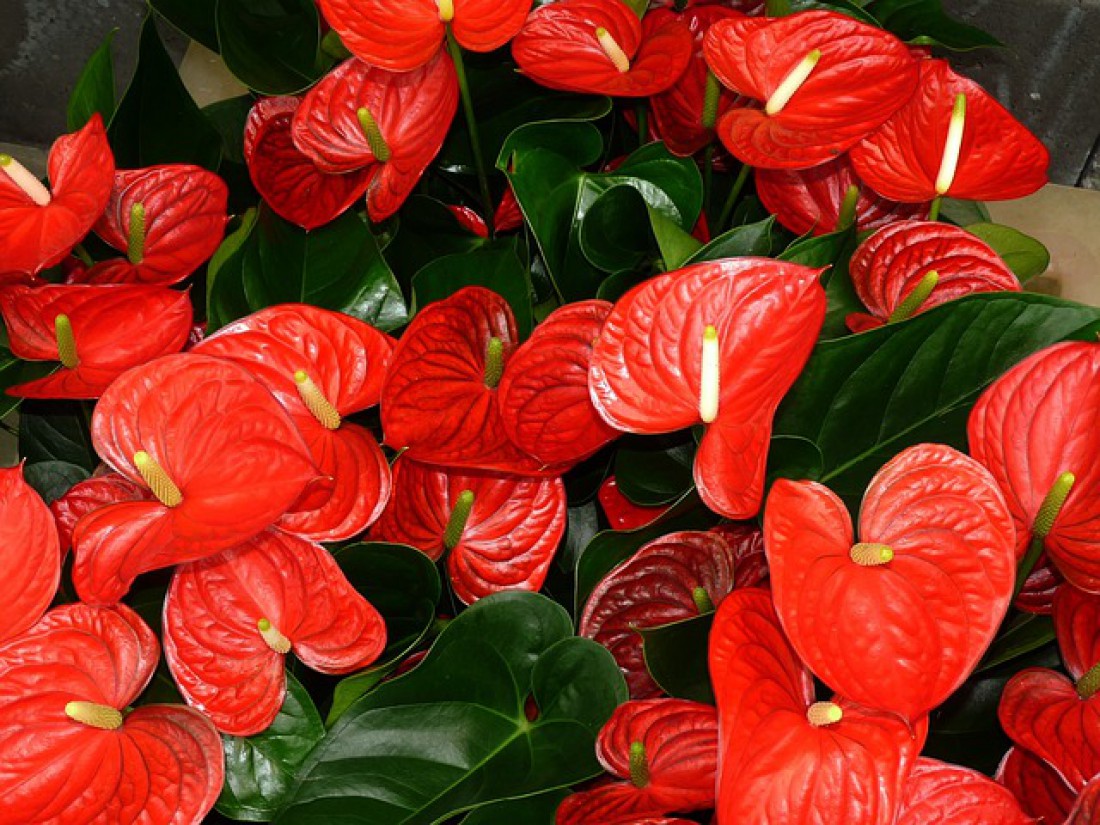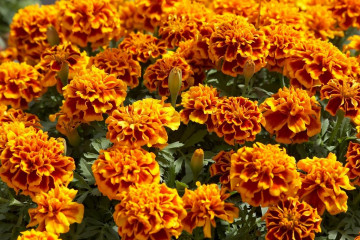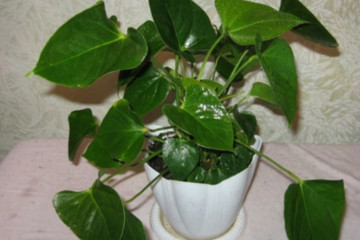Anthurium - home care: why leaves dry
Content:
An evergreen plant of the Aroid family - anthurium - (anthurium) has a high decorative effect, therefore it has become very popular in home floriculture. However, even such an unpretentious plant sometimes suffers from the carelessness of the owner. The material below describes in detail about anthurium, caring for it and possible causes of diseases.
Anthurium: home care, why leaves dry
The reason for the complete drying of the leaf plates can be both the creation of an unfavorable environment and improper care.
Natural aging process
If the bush has been growing in the house for a long time, it is quite possible that it begins to age and slowly die off. This usually occurs at 7-9 years of age, especially in the absence of transplants. The soil is depleted and even frequent feeding will not be able to save the situation.
Improper care
This reason contains many subparagraphs that affect the fact that the leaves begin to dry completely and turn black:
- Excessive or insufficient watering. When the bush is poured, its root begins to rot, and after that the leaves become covered with dark spots and turn black. Flowering also does not come, and the shrub completely loses its foliage. A similar problem occurs due to insufficient watering. The bush withers, the foliage turns yellow and its complete drying.
- Dry air. Since anthurium is a tropical shrub, it needs moist air. A decrease in moisture indicators provokes not only drying of the leaves, but also the appearance of dark spots and pests on them. Insects are carriers of diseases, so you need to pay special attention to the level of humidity in the air.
- Lack of ventilation. Due to the stuffiness and being in the same small room, the bush begins to suffocate, its leaves dry up.
Recent transplant
It happens on the contrary, after transplantation, the anthurium withers, the leaves turn brown and dry. In this case, the problem may be caused by poor-quality soil, since a nutritious substrate is needed for planting.
For anthurium, it must be prepared with the most saturated mineral elements, since the plant is rapidly gaining growth and massiveness. It is necessary to mix light soddy soil, humus, peat, granular mineral nitrogen fertilizer, river sand for drainage.
Diseases and pests
The obvious reasons why foliage can dry out is the appearance of diseases and pests. However, the plant is very rarely sick, except that root rot may appear due to transfusion.
Of the pests, the bush is disturbed by aphids, scale insects and spider mites. They are located on leaf plates and suck out its juices. The spider mite is also recognized by the presence of a thin web on the stems and leaves.
Why only the tips of the leaves dry
Drying of the edge of the leaves can occur due to dry air and the appearance of some pests. This condition usually occurs due to parasitic insects that feed on the sap of the bush.
In anthurium, the tips of the leaves dry out due to prolonged exposure to the sun, sometimes yellow or brown spots on the plates may appear in addition - burns.
Causes of the appearance of yellow leaves
With constant dry air indoors, small yellow young leaves may appear immediately and not grow to the desired size. Dry completely, as a rule, they will be already after 2-3 weeks after appearance.
This problem also occurs when the chlorine content of the irrigation water is high. Excessive overfeeding of the bush with fertilizers or, conversely, a lack of nutrients in the soil is also one of the reasons for the appearance of yellow leaves.
How to treat anthurium if its foliage turns yellow, brown and dries
What to do and how to treat yellowing, darkening and drying of anthurium leaves? First of all, create ideal growing conditions and prevent sudden jumps in humidity and temperature.
It is very important to monitor the humidity indicators in the room where the anthurium content is planned. High humidity is needed, which is difficult to maintain in winter when heating is turned on and on hot dry summer days. Therefore, during this period, spraying is carried out daily and the flower pot is placed on a tray with clean water.
Be sure to ventilate the plant, take it out to the balcony. Just do not allow strong drafts, otherwise you can achieve the opposite effect. Hypothermia of the flower will come, and it will begin to lose foliage and not bloom.
When planting and transplanting, it is imperative to fill the bottom of the container with drainage material. Such a simple method will help in the future to avoid the appearance of black spots on the leaves and diseases with pests.
How to care for a plant to avoid leaf problems
To avoid the problem when the leaves of anthurium dry up and turn black, it is necessary to properly care for it. Before planting a seedling in a container, you should take care of purchasing a suitable pot and creating favorable conditions for keeping in the house. It is better to put the flower in a place with diffused lighting, otherwise the foliage may turn yellow and dry.
The soil should always be loose and moist, so it is worthwhile to irrigate regularly and loosen the soil after the liquid is completely absorbed. Often, anthurium leaves dry out due to low humidity, therefore it is recommended to spray and wipe the leaf plates with a damp cloth once a week.
Why do the leaves of anthurium dry and turn yellow, if home care is carried out according to all the rules? Perhaps the plant lacks nutrients, the soil in the pot needs to be fertilized.
Top dressing is best done in liquid form with special complex mineral fertilizers. Important elements for the nutrition of the bush are:
- nitrogen - increases deciduous mass;
- phosphorus - strengthens and nourishes the roots, improves immunity, protects against pests and diseases;
- potassium - to maintain water balance in the tissues, helps the bush to bloom.
An exotic and beautiful anthurium plant, as a rule, pleases its owners. The plant is not capricious in its care and practically does not get sick, so you just need to adhere to certain growing rules.



















